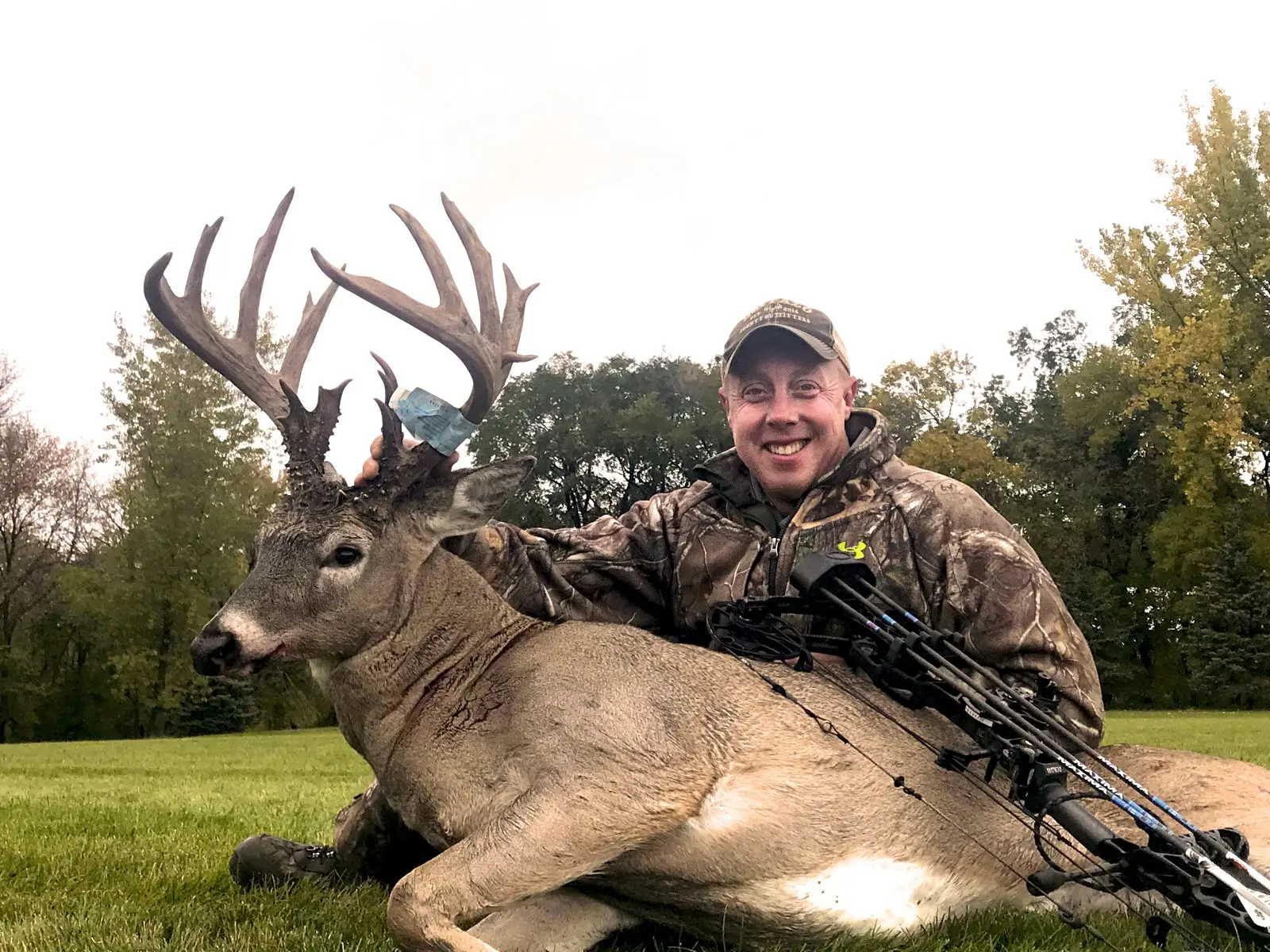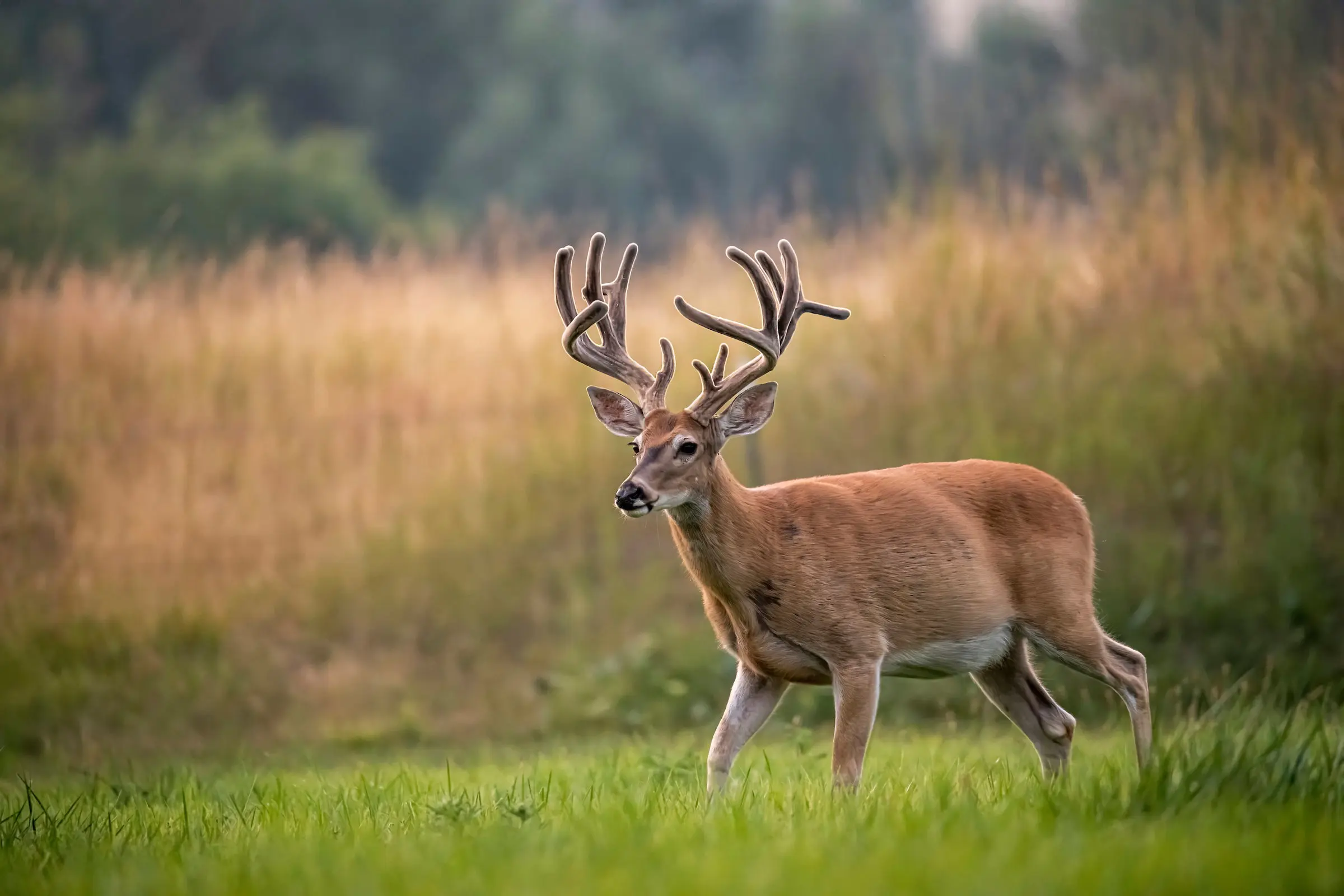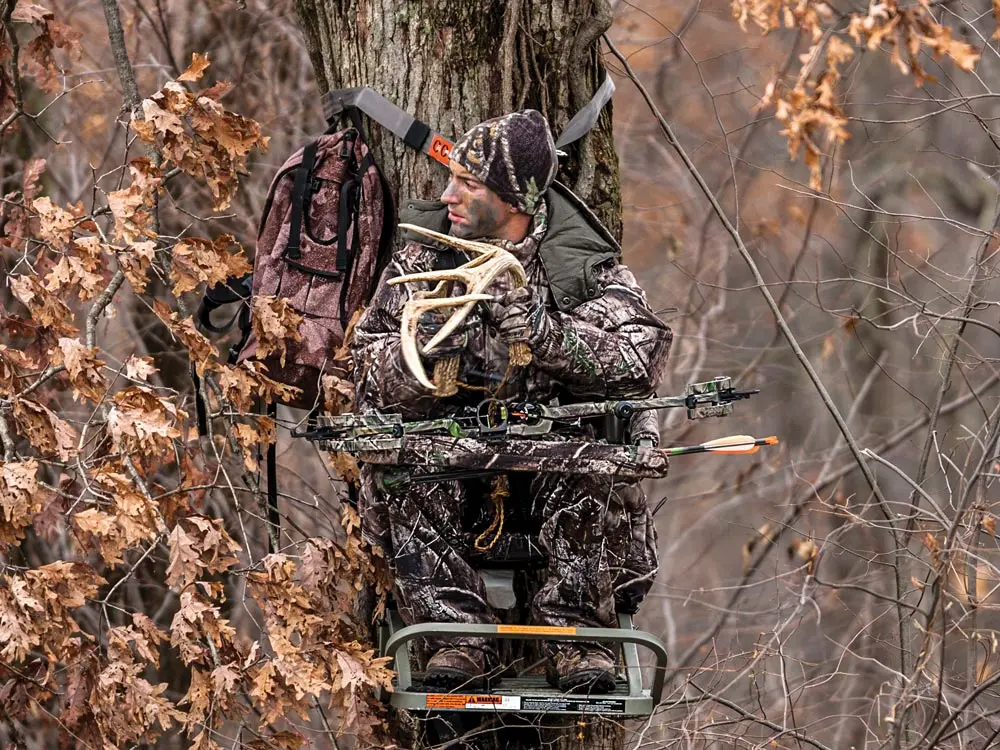Most every whitetail guide worth his salt is a hard worker, but Joel Artis of Buffalo County Outfitters takes things to a whole different level. In addition to his home base in the famed Wisconsin county, Artis also offers hunts in Minnesota, Iowa, and Missouri. Granted, some of these hunts are semi- or self-guided, but Artis has dozens of pre-set tree stands and blinds in each state, and he’s done the necessary legwork—including scouting and planting and maintaining food plots—to make scoring on a mature buck a reasonable goal. For Artis, understanding big-buck behavior and arranging close encounters for his hunters is a year-round, more-than-full-time obsession.
So, who better to ask to share their secrets as we creep closer to the fall hunting season? Here is some of Artis’s hard-won wisdom about hunting mature whitetails, in his own words.
Don’t Miss the Early Season

Every year I get calls from guys wanting to book a rut hunt and I invariably ask, “Why? When you can come the first week of season?” Seriously, even in Wisconsin, which I consider the toughest state I guide in, this is my best hunt of the year. We’ll kill just as many mature bucks the first week as we will any week of the rut. Bucks are on a reasonably predictable bed-to-feed pattern and because they’ve had zero pressure for months, they’re as relaxed as they’ll be all year. If you’re careful and do things right, your odds of killing a bruiser that first week of the season are excellent.
How to Screw Up an Early Season Hunt
The biggest mistake you can make on an early-season hunt is to get too far from the food source. Bucks are bedding super close to the food, which in my areas are usually green sources like clover, alfalfa, and food plots. I set up right on the edge of these to start and only work my back into the cover if I feel the buck isn’t making it to the food before dark. The same is true if you’re hunting acorns. (I prefer a moderate to low acorn year, just because it’s easier to tell which trees the deer are hitting.) I start by hunting trees close to the edge of the timber and work my way back in. Oh, and never hunt mornings. You’ll rarely beat a buck back to his bed, so why risk it?
What People Don’t Get About Big Bucks

Mature bucks aren’t like other deer, and you have to adapt to the whitetails you’re hunting. I see this on a state-by-state basis, as well as an individual one. The bucks in Iowa are not the same as the bucks in Wisconsin, and habitat, weather, and hunting pressure all combine to make them different. If I try to use the same tactics I’d use in Iowa on a Buffalo County buck, I’d probably never kill that Wisconsin deer. They are just that different. Big bucks are also individuals; no two behave the same, and it takes a lot of study, personal observation, trail-cam pics, etc. to learn enough about a mature buck’s tendencies to have a decent chance of killing him.”
The Biggest Mistake Hunters Make About Mature Deer
Outdoor TV has wrecked a lot of hunters, not only for guided hunts, but also for hunting on their own. Their expectations are just way too high, not only for the number of deer they’re going to see, but the quality. This leads to guys getting discouraged too quickly and easily. What they don’t understand, or try to ignore, is the people making these shows often have access to a bunch of prime ground, as well as super expensive tractors and farm/food plot equipment and that’s just not reality for most of us.
They also forget that a half-hour hunting show is like a highlight reel of action that might have taken days or weeks to film. One of the most common questions I get is, “How many deer am I gonna see?” And I have to be brutally honest; you come here during the rut peak, and you might get a day or two when you don’t see a deer all day. But the next morning a giant could walk by you. To me, whether a guy is hunting with an outfitter or on his own, it’s important to have realistic expectations. Figure out the best deer in your neighborhood and with some careful scouting and hunting you kill him—that’s something to be proud of, no matter the size of the buck.
Game-Changer Gear Item
This is a favorite of mine and I love it because it’s basically free; you clip a bunch of vines about the width of your thumb and zip-tie them to overhanging branches on a field or food plot. I don’t know what it is about vines (grape and others all work), but bucks love to rub their heads against them whenever they find ‘em. Lots of times bucks will be hesitant to step into a field or food plot, but if I have vines hanging on the edge near that entry trail, I’ve seen bucks trot or run into that plot and hit a vine before they even take a mouthful of food. If I have a hunter in a stand on that field edge—even if the cover in his tree isn’t that great—he’s golden because that buck is going to be so into working that vine that you can do a dance up there and he won’t even look up at you.
I use them in the woods too. One of my favorite things to do is create a ‘playground’, where I zip-tie several vines in a relatively small area, either by a stand site or an opening in the woods. This is like having a group or line of mock scrapes that attract bucks and make them spend some time in that area. It’s an excellent tool to use near a stand site for the same reasons it works near a food plot, and it’s also a perfect way to inventory area bucks with a trail cam. You’ll be attracting multiple bucks to that area and they’re going to spend some time there too. If I don’t have overhanging limbs, I buy those flag-pole holders from a hardware store, screw them into a tree trunk, jam an overhanging limb into that, then zip-tie my vine to the limb.
How to Screw Up a Hunt, Take Two

This is kind of another example of knowing your deer, but I strongly discourage my Wisconsin and Minnesota hunters from blind calling and rattling. The deer in those states simply see more hunting pressure, and the cover and terrain is different enough that it really influences how a deer comes to calling. In those states, the typical reaction of a buck when he hears rattling or grunting is to use terrain and cover to approach a call from downwind. And the cover is dense enough that that buck is going to bust you, and 9 times out of 10 you’ll never see him. So you’ve just educated a mature buck without even knowing it, and the next time he hears calling he’s going to be more suspicious than curious.
I tell my hunters in those states to only call to a buck they can see and one they don’t think is coming into range. In that case you’ve got nothing to lose. But even then I say get his attention, then shut up and let him dictate the next move. It’s kind of like calling in a turkey; most of the time, curiosity killed the cat is a lot better approach than too much information!
Biggest Client Screw Up
Sometimes forgetfulness can be a screw up, I guess. Anyway, I had a father-son team in camp during the rut, and the father just had an epic day on his first sit on a Wisconsin hunt. He sat all day and saw 24 deer, 10 of which were bucks and three shooters. He watched one of those shooters breed a doe. So needless to say, he came back to camp that night and was as excited as can be. And of course he wanted to sit that stand the next day. So we’re driving out the next morning and we’re almost to the stand and he goes “Oh crap. I forgot my safety harness.” Well I have a strict rule that I will not put anyone in a stand without a harness; I’ll drive you back to camp or have a guide bring me one, but I have to get all the other hunters out first.
I told him “I can’t get you in that stand today, because by the time I get guys out we’ll be busting deer when we go in there. But I have to get someone in that stand today because it’s just too hot.” Well he totally understood and agreed, especially when I said I’d stick his son in that spot. And 45 minutes after legal shooting light, that kid killed a 178-inch 10-point from that very setup.
Best Client Reaction to a Successful Hunt
Have to be that same father-son team. When we found his son’s buck, the father literally tackled me and threw me to the ground. But the kid was even better. He was probably 20 then, and of course that deer was the biggest buck he’d ever shot. And I don’t think he even went to sleep that night; he just stayed up, staring at that deer. Of course, the dad was ecstatic for his son, but he’s hunted with me for three years since, and any time I want to get a rise out of him before taking him out I’ll just grin and say “Got your safety harness?” and I get a nice “Screw you” before he hops out of the truck.
Mind the Pressure, Forget the Moon
In my experience, the No. 1 thing that makes deer move better than any other factor is the barometer; anything over 30 and rising is good. This is especially true in the bluff country of Wisconsin and Minnesota, where thermals are always a factor. Rising pressure makes for more consistent thermals, and if I have high pressure, I’ll push the envelope more on a stand where the wind and thermals can be tricky.
As for the moon and its influence on deer movement, for the most part I don’t buy it. As far as the old theory that deer move better midday on a full moon because bucks have been up all night chasing, I don’t believe that either. I’ve had some of my best weeks during a full moon, and I’ve had some of my worst weeks. My basic belief is that deer move when they want, where they want, and whenever they want, and the moon doesn’t dictate that. So you just need to be out in your good stands, grinding it out.
I have noticed a tendency for good movement on a south wind, after we haven’t had one for awhile. Again, this isn’t something I can explain, just a consistency I’ve seen over the years. The overall perfect movement scenario for me is a combination of cooler temps with a south wind after multiple days of north-northwest, and a barometric pressure over 30 and rising. When that happens, get ready for some good action!
Good Client vs Bad Client
The best clients are the ones who come here for a great experience and don’t place all their hopes for a good hunt on killing a deer. They’re also my eyes and ears out there. When I hang a stand, I’m pretty confident it’s in the right spot, but of course sometimes the deer have other ideas, and the only way I can know that is by hunters giving me feedback through accurate and detailed observation, especially on a new setup. If it needs tweaking or moving, I’m happy to do that, but I can’t know unless hunters tell me what they’re seeing. Some guys are excellent at this and others are very tight-lipped about what they see and I don’t get it.
The worst clients are the ones who place all their emphasis on tagging out and forget to enjoy the hunt in the process. To me, whether you’re hunting on your own or with a guide, you should enjoy the experience and your time in the woods. And of course every outfitter has crazy hunter stories; my most recent one was when I noticed a horrible smell in the bunkhouse as I’m getting ready to take hunters out. I finally traced the odor to a hunter from Colorado, who was dousing his clothing in cow-elk urine, and getting it all over his bedding in the process! He said he and his buddies use the stuff all the time while elk hunting in the mountains and I said “Yeah well that’s not gonna work here!”


